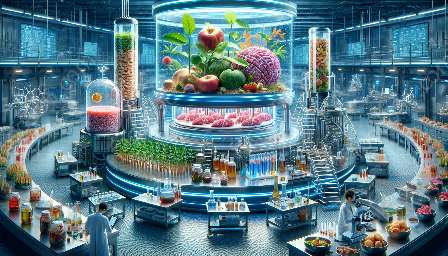Food waste is a significant issue worldwide, with an estimated 1.3 billion tons of food wasted annually. This presents both an environmental challenge and an opportunity for energy generation. Anaerobic digestion, a process by which microorganisms break down organic matter in the absence of oxygen, offers a sustainable solution for converting food waste into energy.
With the rise of interest in waste-to-energy conversion in the food processing industry and the advancements in food biotechnology, anaerobic digestion has become a focal point for sustainable energy production. This article explores the role of anaerobic digestion in food waste-to-energy conversion and its compatibility with waste-to-energy conversion in the food processing industry through biotechnology and food biotechnology.
Understanding Anaerobic Digestion
Anaerobic digestion is a biological process that occurs in the absence of oxygen, where microorganisms, such as bacteria and archaea, break down organic matter into biogas and digestate. The biogas produced consists primarily of methane and carbon dioxide, making it a valuable source of renewable energy. The digestate, on the other hand, can be used as a nutrient-rich fertilizer for agricultural purposes.
Food Waste-to-Energy Conversion
Food waste-to-energy conversion refers to the process of converting food waste into useful energy, such as biogas, through methods like anaerobic digestion. This approach not only addresses the issue of food waste but also contributes to sustainable energy production, reducing reliance on non-renewable resources.
Benefits of Anaerobic Digestion in Food Waste-to-Energy Conversion
Anaerobic digestion offers several benefits in the conversion of food waste to energy:
- Reduced Environmental Impact: By diverting food waste from landfills and utilizing it for energy production, anaerobic digestion helps reduce greenhouse gas emissions and environmental pollution.
- Renewable Energy Generation: Biogas produced through anaerobic digestion serves as a renewable energy source, contributing to the reduction of fossil fuel consumption.
- Resource Recovery: The nutrient-rich digestate obtained from the anaerobic digestion process can be used as a natural fertilizer, promoting soil health and crop productivity.
Compatibility with Waste-to-Energy Conversion in the Food Processing Industry through Biotechnology
In the food processing industry, waste-to-energy conversion through biotechnology plays a vital role in addressing waste management and energy needs. The use of biotechnological advancements enhances the efficiency and effectiveness of anaerobic digestion in converting food waste to energy. This compatibility allows for the integration of sustainable waste management practices with energy production, creating a circular economy within the food processing industry.
Integration with Food Biotechnology
The field of food biotechnology leverages scientific and engineering principles to improve food production, preservation, and waste management. By integrating anaerobic digestion in food waste-to-energy conversion with food biotechnology, the industry can enhance the utilization of organic waste for energy generation while ensuring the safety and quality of food products.
Conclusion
Anaerobic digestion offers a sustainable and environmentally friendly solution for converting food waste into energy. Its compatibility with waste-to-energy conversion in the food processing industry through biotechnology and food biotechnology underscores the importance of integrating innovative approaches to address food waste and energy challenges. As the demand for sustainable practices grows, anaerobic digestion stands out as a promising technology for food waste-to-energy conversion, contributing to a more sustainable and circular economy.

